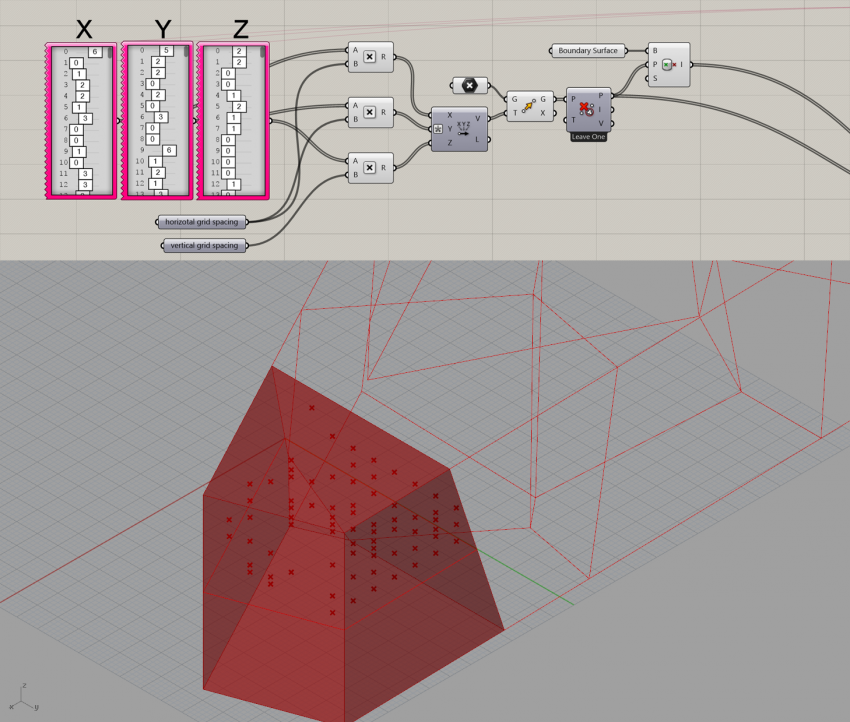project07:Expert3
Programming
1. The Arrangement of the Cells
The building is made of a series of individual, interconnected, cells. An initial issue solved thanks to the power of computing is how to dispose those cells in the space. One among the most important forces that have driven the final shape is the need of providing enough solar illumination to all of them, in order to optimize the growing environment for every species of plants. The approach we have chosen to solve this kind of problem went through the voxelization of available space for the building and
The approach we have used went through the voxelization of our plot: by subdividing our volume in smaller units, we had the opportunity to test and catalogue an extremely large amount of different possible spatial configurations for our building. We then used the data obtained during this process to construct the optimal shape.
1.1 The voxelization
The voxelization has been accomplished in grasshopper. The algorithm was fed by a list of generic three dimensional, integer, vectors (representing the generic points of a rectangular grid), a boundary (representing our voronoi cell) and the dimensions of the single voxel. The result was a transformed list of the input vectors by deforming it and culling duplicate vectors or those that happened to be outside of the voronoi cell. By altering the components of the input list in a range of discrete, integer values, the algorithm is able to produce an unique set of voxels. Those voxels could be interpreted as one of the possible distribution of mass inside the voronoi cell.
In order to optimize the analysis performance and the efficiency of the script, we decided to represent the cells with single voxels.
1.2 The analysis
The analysis of the set of voxels produced by the previous step has been the most challenging part of the task, both at the conceptual and computational level.
We had to come out with a series of quantitative values that could be used to score a particular configuration of voxel. At that stage we had identified three parameters that had to be kept in consideration during the anlis: the average solar irradiation of the surfaces, the distance between the single cells, the number of neighbouring cells that every cell had and the total population of cells.
In order to perform the solar analysis we "materialized" the voxels by assigning to every vector produced at the previous step a box that would roughly approximate our cells. At first we considered to use Autodesk Ecotect as the analysis engine, but we soon discovered that any implementation of it would have runned way to slow for our purposes, making unfeasible to test a large enough variety of different configurations.
An interesting insight came at that point from thi
